With its distinct, sloping head and chestnut hues, the canvasback is one of the most striking waterfowl species, long a favorite of both duck hunters and birders. But the canvasback’s recent history also illustrates the perils, the promises and the continued challenges of migratory bird conservation.
From commercial hunting to wetland loss to drought to water quality degradation, the canvasback has faced its share of setbacks. But its populations have remained relatively stable – a testament to what motivated conservationists can achieve.
Here’s the story of the twists and turns of canvasback conservation.
The Aristocratic Diver
Like many migratory birds, canvasbacks have a mix of habitat needs during different parts of the year. They’re most visible in the fall and winter when they’re in large flocks on large bays and lakes. But they actually nest on prairie potholes, the small wetlands of the Midwest and Canada. One study found that 65 percent of hen canvasbacks nested on wetlands that were one acre or less in size.
Even before human disturbance of wetlands, these small waters were prone to disappearing in dry years. Hen canvasbacks will delay or even skip nesting during drought conditions. As such their populations can experience significant fluctuations even when no other factors are at play.
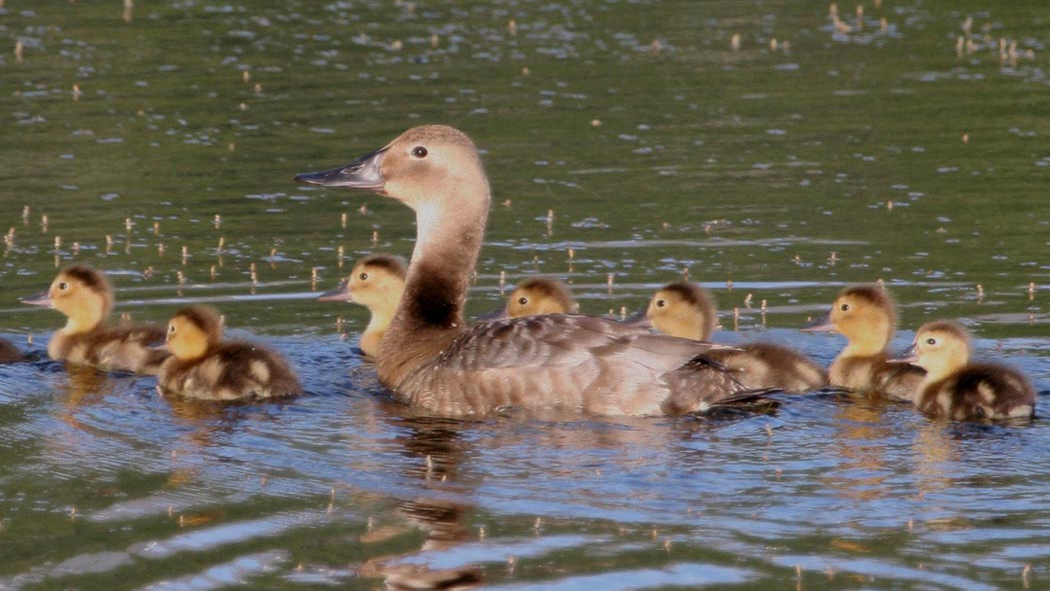
By summer, canvasbacks begin moving to larger waters in search of food. They’re diving ducks, with large feet for propelling them underwater. They feed on a variety of aquatic plants and invertebrates, and particularly favor wild celery. In fact, the canvasback’s scientific name, Aythya valisineria, derives from that of wild celery, Vallisneria americana. This preferred food also plays a significant role in the canvasback conservation story. More on this in a bit.
As fall approaches, canvasbacks congregate in increasingly larger flocks on larger waterways, like the Mississippi River. They spend winters on even larger waters, like saltwater bays and the Great Lakes. The Chesapeake Bay, historically, was a particularly famous wintering area, with huge canvasback congregations.
The winter flocks have long been what most people associate with canvasbacks, but the small wetlands and rivers are just as important for their conservation.
Hunters and birders alike celebrate the canvasback’s striking appearance, and many written accounts describe the bird as “aristocratic.” But people were initially drawn to canvasbacks not because of their appearance, but because of their taste. Many consider canvasback to be one of the finest game meats. And this nearly led to their demise.

Canvasback, It’s What’s For Dinner
Humans have hunted canvasbacks in North America for a very, very long time. A cave excavation in Nevada found Native American canvasback decoys more than 2,000 years old. The large flocks of birds were a natural bounty that could be harvested year after year.
To European colonists, this bounty seemed endless. And in a familiar story, this proved a mistaken notion. Until the mid-1800s, the hunting was small scale and likely had minimal effects on canvasback populations.
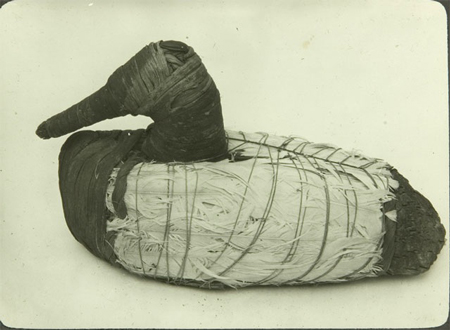
As Ducks Unlimited’s Mark Petrie writes in an excellent essay on commercial waterfowl hunting:
“Prior to the Civil War, the impact of market hunting on continental duck populations was probably small. Duck populations were three to four times larger than they are today and sport hunting was almost nonexistent. Most market hunters were limited to black-powder muzzleloading shotguns and the demand for ducks was localized. That was the farmers’ market era of commercial hunting. After 1865, however, market hunting joined the industrial age, with predictable consequences for waterfowl.”
The industrial-scale hunting was fueled in part by more effective shotguns, but probably an even more important factor was refrigeration. Ducks could now be shipped from remote bays to urban restaurants, where sophisticated consumers loved the taste of canvasback.
The wild celery in the canvasback’s diet imparts a unique flavor, one that apparently sets it apart from other ducks. When countries urbanize, city residents often find wild game to either be nostalgic or an exotic taste. This trend continues to this day in many parts of the world, fueling continued wildlife poaching and commercial hunting.
In the late 1800s, waterfowl and other wild game was often on the menu of the finest city restaurants. Mark Twain listed canvasback as one of the quintessential American foods he missed while traveling in Europe. (This list of 60 foods, by the way, offers a very telling look at what constituted “local food” in Twain’s day. I recommend the book Twain’s Feast by Andrew Beahrs if you’re interested in food history).
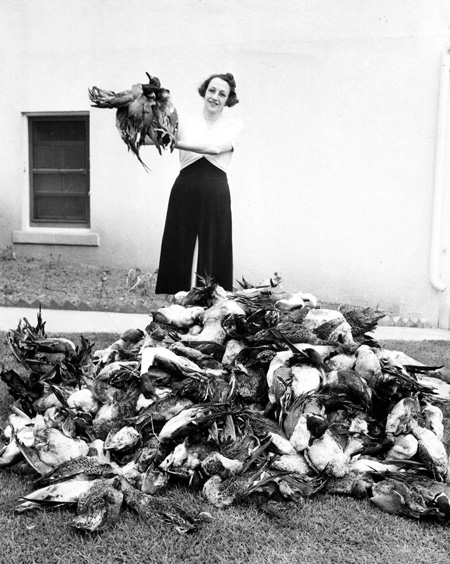
We often associate wild game as subsistence food, but canvasback was a luxury item. A pair of canvasbacks would have cost more than $100 in today’s dollars, a dinner for the rich and famous.
Of course, such high prices fueled a market hunting industry. As a boy obsessed with hunting, I was fascinated by the historic Chesapeake Bay hunters and the tactics they employed. They often carved their own decoys, now considered folk art. Some used massive shotguns, called punt guns, that resembled small cannons. These could kill multiple birds with one shot. Others used duck traps to capture the birds, or raised live decoys to lure them into shooting range. Market gunners hunted day and night, killing staggering numbers of birds.
While this may have seemed romantic to an outdoors-loving youngster, the truth is these methods devastated ducks. Since canvasbacks may not nest in dry years, overhunting could quickly devastate the population. By the early 1900s, it was clear that canvasbacks and many other migratory bird species were in trouble.
In 1913, recognizing that waterfowl don’t follow state boundaries, the Weeks-Mclean Act transferred the regulation of waterfowl management from states to the federal government. But, as is also the case with wildlife conservation everywhere, regulations without enforcement make little difference. In 1918, the Migratory Bird Treaty Act outlawed market hunting and provided funding for enforcement.
Recreational hunters had become a significant interest group, and provided a lot of political support for waterfowl conservation – as has remained the case to this day. While market hunting continued after 1918, it began to wane and was no longer a significant factor in waterfowl decline.
But canvasback populations weren’t secure yet. Stopping unregulated killing helped, but the birds still need healthy habitat.
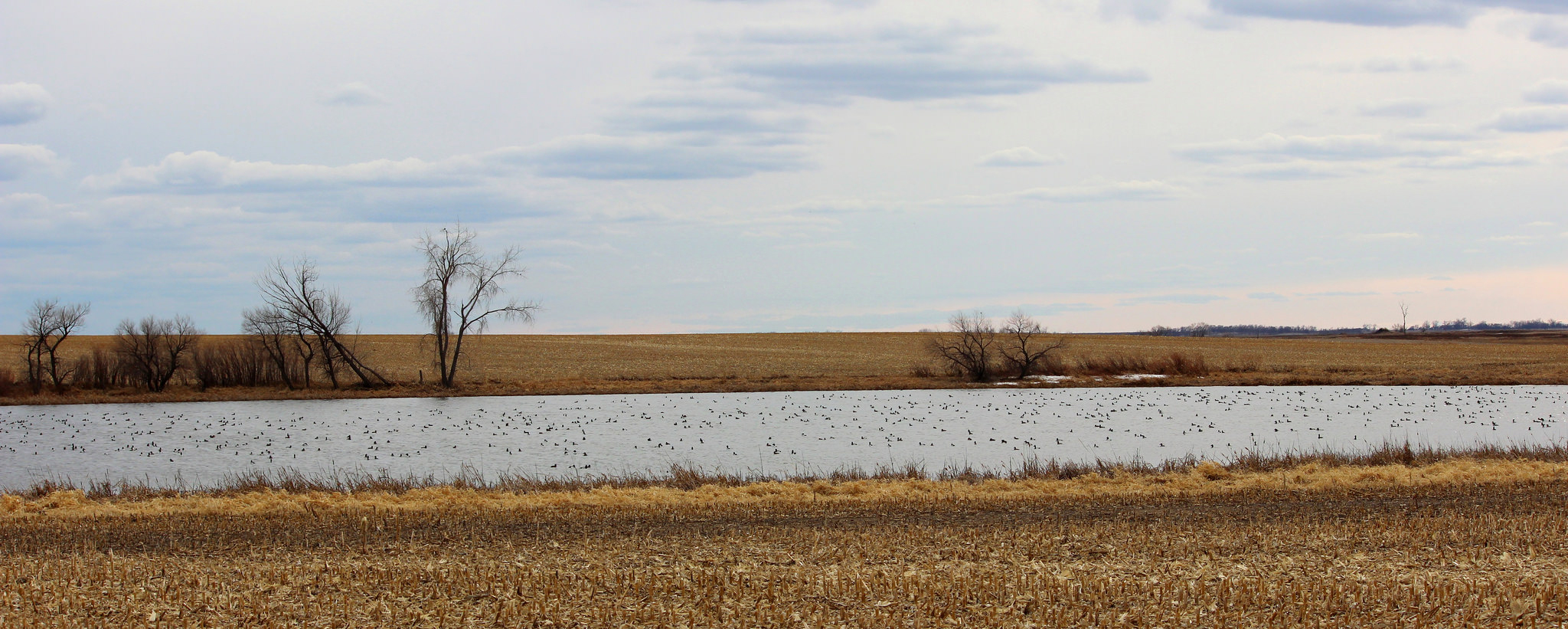
As Go The Wetlands…
Canvasback populations rebounded after market hunting was outlawed, but since the mid-1900s their populations have fluctuated, sometimes dramatically.
In the 1930s, canvasback populations suffered a major decline, due to the drought that caused the Dust Bowl. The drainage of small wetlands in the Midwest led to another decline in the 1960s and 1970s. Some sources estimate the population declined to 500,000 birds at this time, half of what it was in the 1950s. The population has continued to fluctuate, but it has remained around 500,000 birds.
Waterfowl species have benefited from one of the most effective conservation campaigns ever launched. The Migratory Bird Hunting and Conservation Stamp (commonly called simply the Duck Stamp), required for all adult waterfowl hunters, has conserved more than 5.3 million acres of wetland habitat. The story of this stamp, conceived by a political cartoonist appointed by President Franklin D. Roosevelt, is one of the most remarkable wildlife success stories ever.
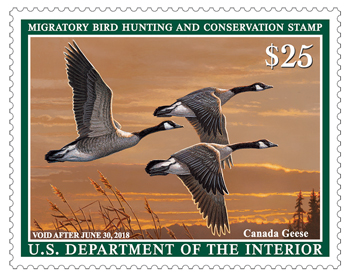
The National Wildlife Refuge System has played a critical role in conserving wetland habitat, and many of the refuges were purchased with Duck Stamp proceeds. Ducks Unlimited, supported primarily by duck hunters, is an incredibly effective organization in protecting wetland habitat. The group often partners with The Nature Conservancy on wetland projects. Federal Farm Bill programs protect additional habitat, especially in the prairie pothole region.
While commercial duck hunting almost eliminated canvasbacks, recreational hunting has played a major role in restoring it and other waterfowl species.
But challenges remain for canvasbacks. Loss of wetlands remains a perpetual concern. So does loss of water quality.
Canvasbacks have altered migration routes and wintering areas as some habitat declines and others improve. In the 1950s, more than 250,000 canvasbacks wintered in the Chesapeake Bay. Today, only about 25,000 do. As the U.S. Fish and Wildlife Service notes, this is due to the well-publicized decline in the bay’s water quality.
This decline in water quality may even affect the canvasback’s legendary taste. Wild celery is also very sensitive to water quality, and it has disappeared from many parts of the Chesapeake Bay and other waterways.
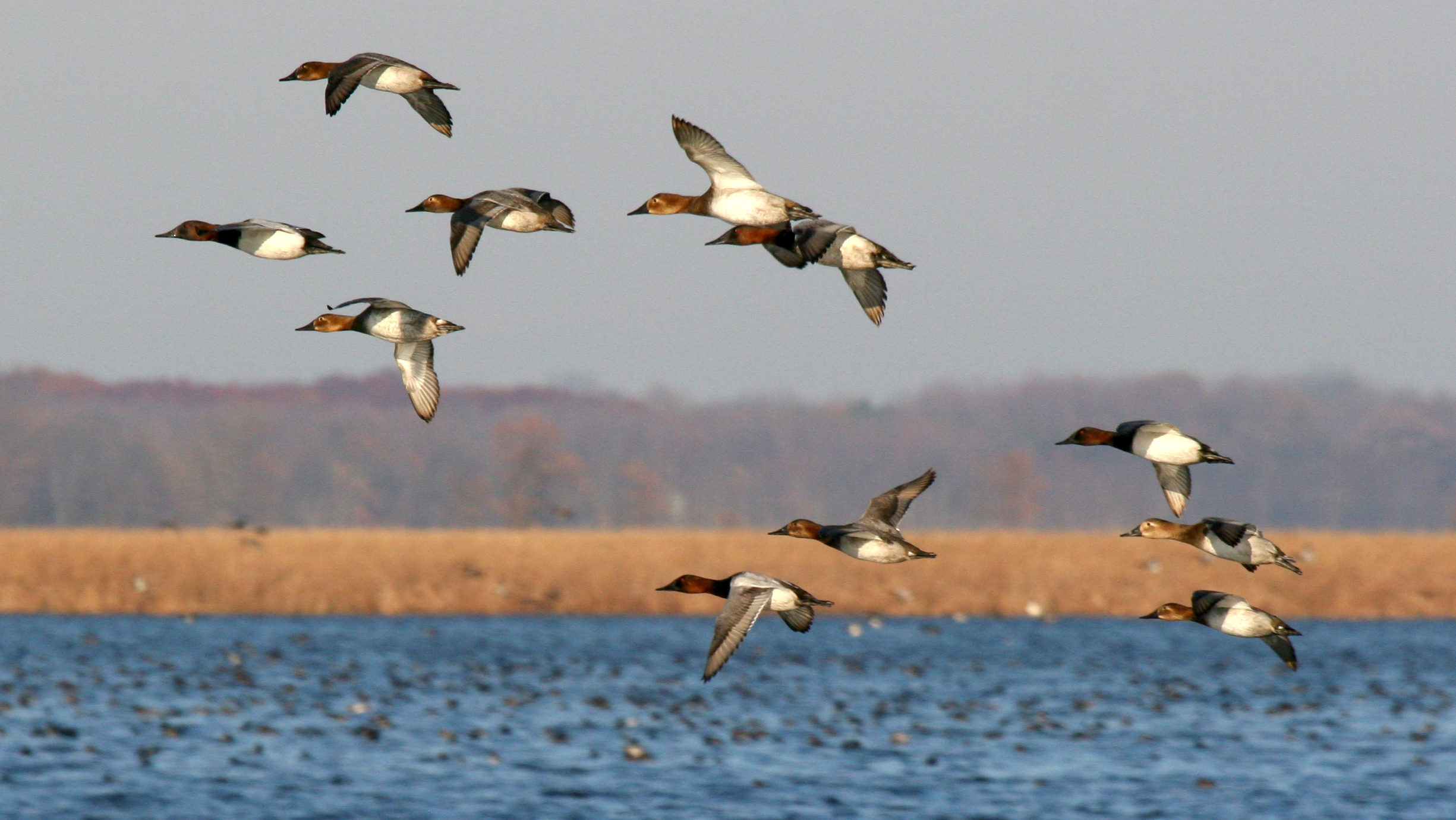
“Let’s just admit it. Many of us who have shot a can are a little disappointed in the culinary experience. Sure they’re good, but no better than a corn-fed mallard or a pintail that’s stuffed itself with rice for three months. Why all the fuss? Well, the fuss has a Latin name-Vallisneria americana, or wild celery. Canvasbacks are very partial to this plant, and those that dined on it acquired a flavor like no other duck in the world. Wild celery is highly sensitive to changes in water quality, and pollution has eliminated much of it since the market hunting days. At present, your odds of shooting a canvasback that has ordered only from the wild celery menu just aren’t very good.”
Still, compared to the threats facing many wildlife species, the canvasback’s future is bright. That’s because of strong federal regulations and enforcement. It’s because of habitat protection, and a program that effectively funds that protection. And it’s because a committed conservationists – waterfowl hunters and birders – have worked hard on the bird’s behalf. These factors should be a recipe for protecting other wildlife species around the globe.
Canvasbacks are staging in flocks along the Mississippi and other rivers, and soon the large flocks will appear on bays and lakes. Here’s to enjoying the spectacle, and in working to ensure that this beautiful duck remains a part of North America’s natural heritage.
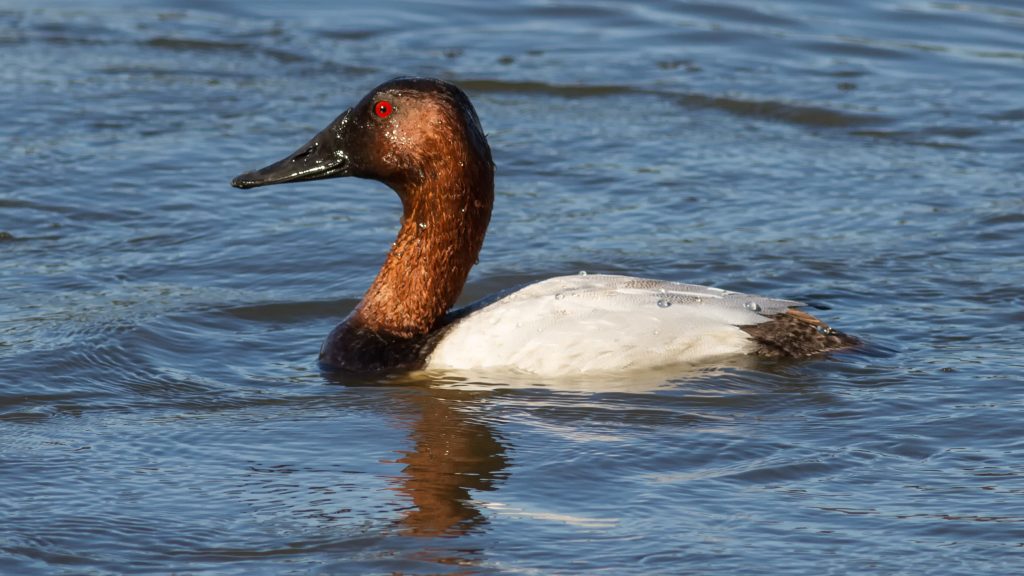



What’s going on in our creek with the canvas backs? Early spring they form a tight group. Then, they proceed outward in a circle. The front ducks dive and come up inside the circle. The circle gets larger and larger. Or, they form a line across the creek and proceed down the creek. The front ducks dive and come up behind. We assume that they are hearding fish.
I have seen a line of porpoise exhibiting similar behavior across a river.
Do you have any thoughts on this canvasback behavior?
Hi Clint,
I have seen this in other waterfowl species (notably American mergansers). I have not seen any formal description but do suspect it is related to foraging. Canvasbacks are highly social species through the winter. When it is breeding season, they pair off and will migrate as pairs instead of flocks. They are such cool ducks. Enjoy them and keep observing them!
Cheers,
Matt
lake greenbrook, southaven, ms. for the first time this year in over 20 years we have sighted canvas back ducks on our residential lake of 75acres. probably migration to some point unknown. we get a variety of fowl on this lake some migratory , some part of the eco-niche: canadian geese (common), snow goose (first time this year), pelicans (huh?) yep, we are hundreds of miles from salt water, bald eagles, sea gulls, cormorants, mallards, herons, and a few unmentionables. because this is a private lake association we seem to be unable to arouse any federal or state aid to help preserve the habitat on this lake.
nice brief article thanks. gerald lgpoa president
Great Article. The Canvasback is the King of Ducks. At 90 I had my last duck hunt last weekend. My first duck hunt was in 1938. Of all the hunts and all the ducks that fell in our decoys, the Can shoots are the most memorable. The roar of the wind in the wings of 30 or 40 heavy Cans diving from high to your water is unreal, raises the hackles on your neck, and sometimes unhinges your shooting skill. Even a slight hint of
a turn to your decoys followed by a second pass with big grey feet down is the duck hunter’s supreme fantasy. There aren’t many of us left that know what I am saying but it is one of the reason we have duck hunters.
Unfortunately Can numbers are down and habitat work is the key.
I enjoyed this article about the Canvasback Duck very much.
As a boy growing up in Napa, California and duck hunting the tule marsh’s of the area I so much remember how special it was to take hoe a pair of Canvasbacks that ended up on the dinner table. “Mom” was always ready to change the dinner menu for the “fresh Can’s” she skillfully and proudly prepared.
Especially, I enjoyed learning about the “wild celery” and it’s effects on the flavor of the Canvasback served for dinner. Also, I better understand why I had seen this duck in places I had thought as uncommon and reserved for the puddle duck’s.
Thanks for the basic education as I sit by the fireplace, at age eighty -three, recalling those days in the duck blind waiting for that prized “Canvasback” to appear.
Question:
1. Where can I find “Wild Celery” starts?
2. Do you ever do any public speaking on this subject?
I really enjoyed this article. I love reading about wildlife. Thank you
This piece addresses the many human impacts on canvasback and other waterfowl species. Recently, and most critically, the impact of lost and degraded habitat. Unlike the damage done by market hunting decades ago, habitat loss is unlikely to be reversed; and, as pressure builds to feed more and more mouths, degradation of waterways is likely to get worse before it gets better.
Considering the general lack of awareness displayed in the comment critical of hunting, it is important that people understand the consequences of their eating behavior. Whereas hunting consumes only the excess animals in a limited number of game populations (nature always breeds more animals than habitat can support, and the rest perish of disease or starvation whether we eat them or not), agriculture destroys every individual of every single species on the lands converted to that purpose. Those that escape the crush of the plow are fated to die slowly of starvation once their habitat is destroyed. Couple direct habitat loss with offsite damage resulting from fertilizer runoff, erosion, and water depletion and you have a recipe for disaster. Agriculture has become the foremost cause of extinction, world-wide, and a major source of greenhouse gases destined to alter our environment for millennia. Where such damage can be alleviated by augmenting our diet in a sustainable manner with foods grown naturally on undisturbed lands, it makes perfect sense to do so.
THANK YOU FOR ALL YOU DO & WILL CONTINUE TO DO TO SAVE OUR EARTH.
How about a moratorium on hunting, to start?
Then actually recreating environments for our wildlife which are quickly going the way of Europe’s and Asia’s byt our decimation took only 50 to 60 years… We could be
planting wild celery and working to restore more wetlands, for example, particularly preventing their destruction in the first place.
There are many of us who love wildlife because of its unbelievable diversity of species and varieties within that, of their beauty, evolutionary history (deer have been evolving for 30 million years and in my town have been reduced to a small number of fawns by winter’s
beginning), and observe them
in our yards over time, except when they are shot down and visit no more, leaving their young offspring uneducated thereby highly vulnerable as to sources of water in drought, when to cross highways, types and locations of edible foods (as simple as apples). They are becoming as isolated as humans, luck ng unnatural lives in solace instead of the herds and flocks that give them security.
They are now living w a high level of anxiety year round. A pity and sad portrait of humanity.